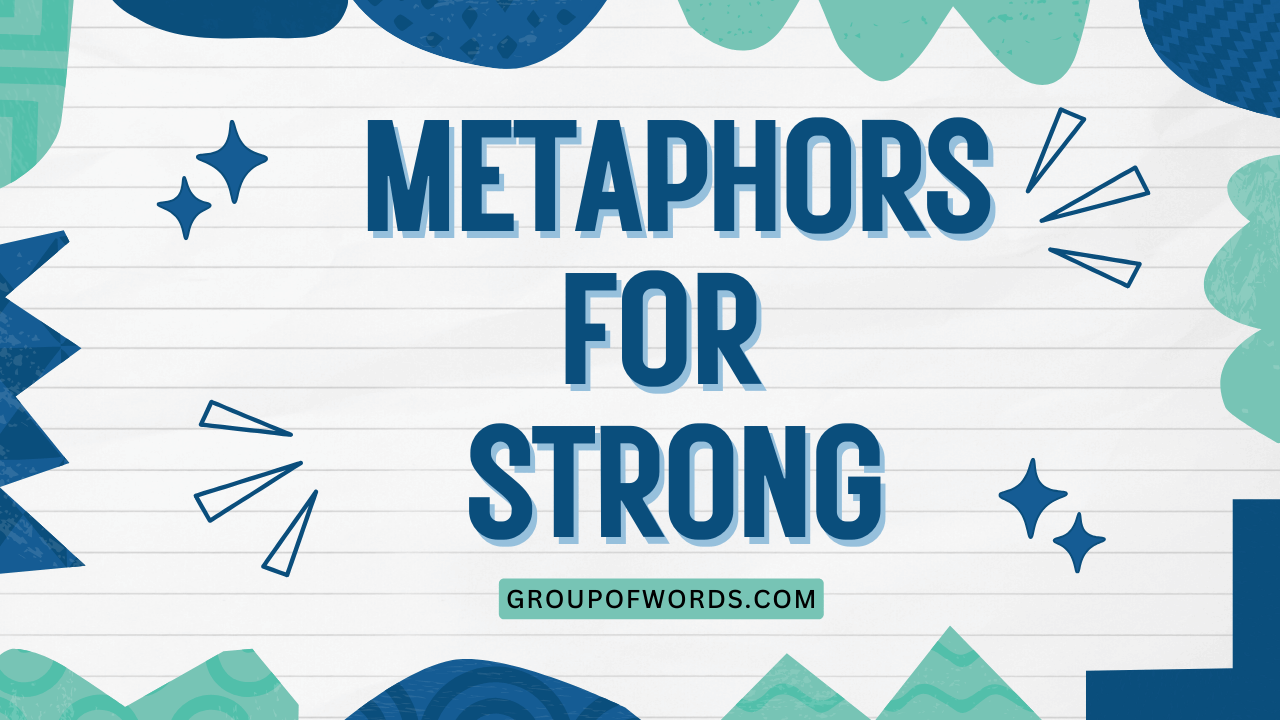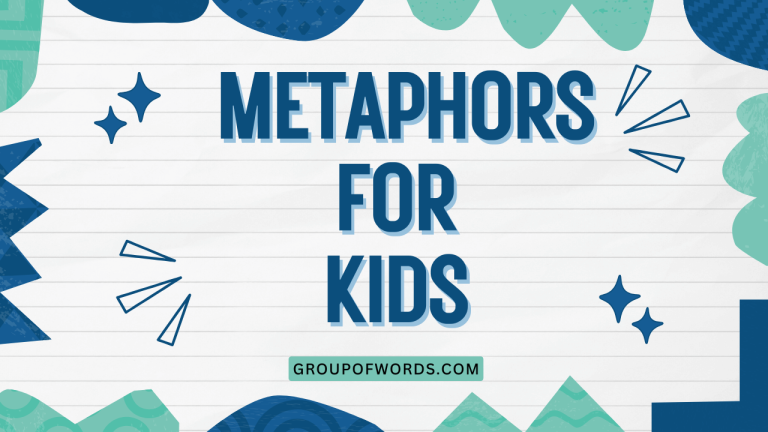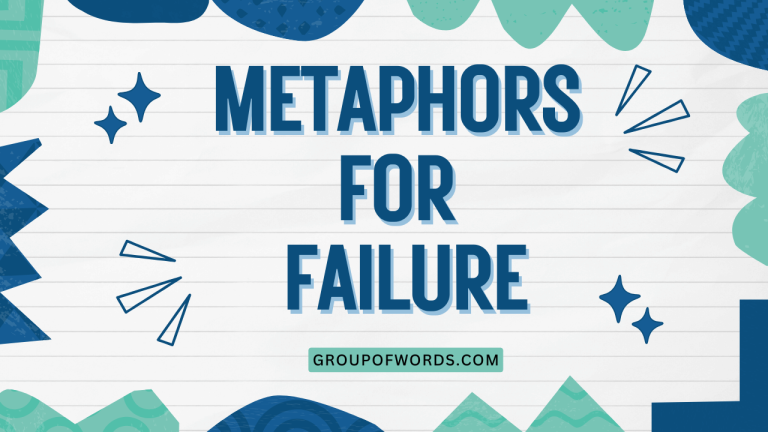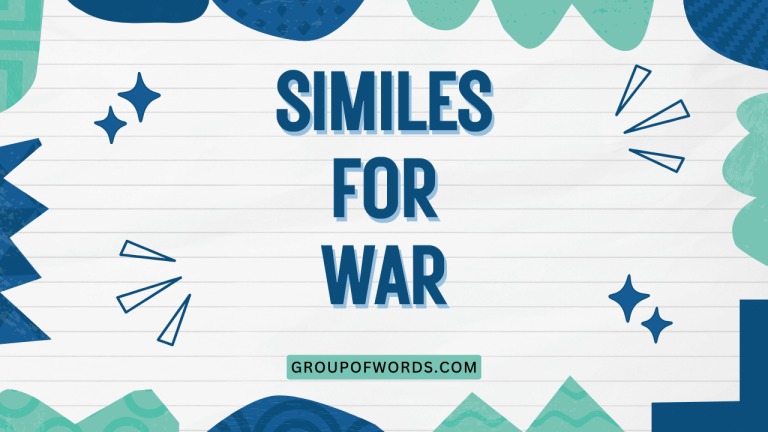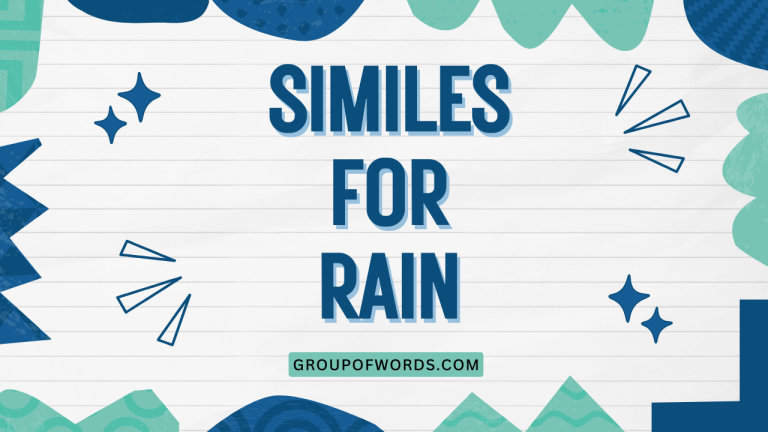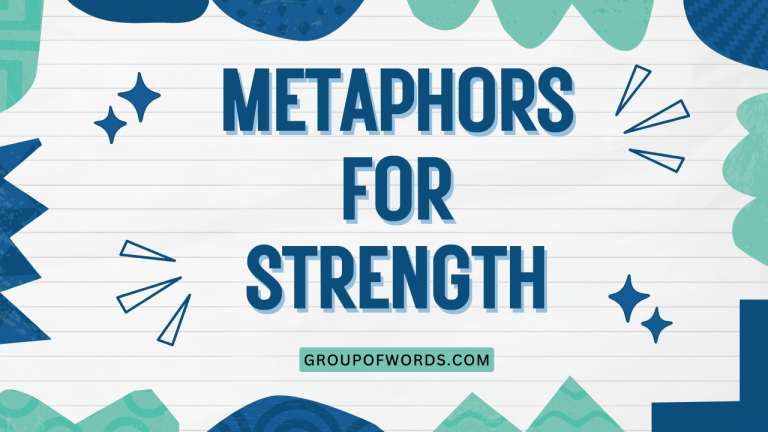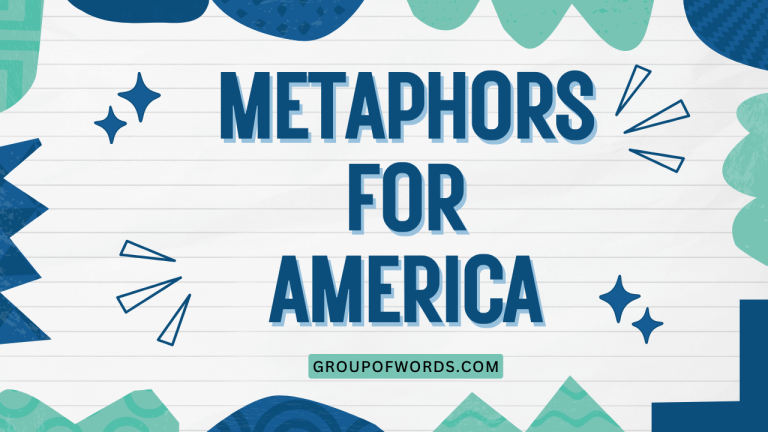Metaphors for Strong: A Comprehensive Guide
Understanding how to use metaphors to describe strength is essential for vivid and impactful communication. This article delves into the various metaphors that can be used to convey the concept of strength, enhancing your descriptive writing and speaking skills.
Whether you’re a student, writer, or simply someone looking to improve their English proficiency, this guide will provide you with a comprehensive understanding of metaphors for strength, complete with examples, usage rules, and practice exercises.
Table of Contents
- Introduction
- Definition of Metaphor for Strong
- Structural Breakdown of Metaphors
- Types and Categories of Metaphors for Strong
- Examples of Metaphors for Strong
- Usage Rules for Metaphors
- Common Mistakes with Metaphors
- Practice Exercises
- Advanced Topics in Metaphors
- Frequently Asked Questions
- Conclusion
Definition of Metaphor for Strong
A metaphor is a figure of speech that directly compares two unrelated things, asserting that one thing is another, not in a literal sense, but to highlight shared qualities or characteristics. When we use metaphors for “strong,” we’re using words or phrases that typically describe powerful physical objects or forces to represent the qualities of strength in a person, idea, or situation. The function of these metaphors is to create a more vivid and impactful image in the reader’s or listener’s mind, conveying the intensity and nature of the strength being described. The context in which these metaphors are used can vary widely, from literature and poetry to everyday conversation and business communication.
The classification of metaphors for “strong” falls under the broader category of figurative language. They can be further classified based on the type of strength they represent (physical, emotional, mental, etc.).
Understanding this classification helps in choosing the most appropriate and effective metaphor for a given situation. For instance, using “a fortress of solitude” to describe someone’s emotional resilience is more fitting than describing them as “an oak tree” when focusing on their inner resolve.
Structural Breakdown of Metaphors
The structure of a metaphor typically involves two key elements: the tenor and the vehicle. The tenor is the subject to which the metaphor refers (in our case, the concept of “strong”), and the vehicle is the image or concept that is used to represent the tenor. The connection between the tenor and the vehicle is not literal; it’s based on shared characteristics or associations. For example, in the metaphor “He is a rock,” “he” is the tenor, and “rock” is the vehicle. The shared characteristic is stability and unyielding nature.
Effective metaphors also rely on implied meaning. The audience must understand the connection between the tenor and the vehicle without explicit explanation. This requires a shared cultural understanding or common knowledge. If the connection is too obscure or unclear, the metaphor may fail to resonate and could even confuse the audience. The power of a metaphor lies in its ability to evoke a sense of understanding and recognition, creating a deeper emotional or intellectual impact.
Metaphors can be simple or complex. A simple metaphor directly equates one thing to another, while a complex metaphor extends the comparison over several sentences or even an entire piece of writing.
The complexity of the metaphor should be appropriate for the audience and the context. Overly complex metaphors can become convoluted and lose their effectiveness, while overly simple metaphors may lack the depth and nuance needed to convey the intended meaning.
Types and Categories of Metaphors for Strong
Physical Strength Metaphors
These metaphors draw comparisons between physical objects or forces and the physical strength of a person or thing. They often involve images of powerful animals, natural elements, or sturdy structures.
These metaphors are useful for describing literal, measurable strength, such as the power of an athlete or the resilience of materials.
Emotional Strength Metaphors
Emotional strength metaphors often involve resilience, fortitude, and the ability to withstand emotional challenges. These metaphors might relate to weather phenomena, natural landscapes, or human-made structures that can endure hardship.
They are used to depict inner strength and the capacity to cope with adversity.
Mental Strength Metaphors
Mental strength metaphors focus on intellect, determination, and the ability to overcome mental obstacles. These metaphors frequently involve imagery of sharpness, clarity, and strategic thinking and often involve comparing the mind to a weapon, a tool, or a well-organized system.
They are used to convey the power of intellect and the ability to think critically and solve problems.
Strength of Character Metaphors
These metaphors describe moral fortitude, integrity, and the ability to stand up for one’s beliefs. They often involve comparisons to virtuous figures, unwavering principles, or foundational elements.
These metaphors are used to emphasize the importance of ethical behavior and the power of conviction.
Environmental Strength Metaphors
Environmental strength metaphors describe the power and resilience of natural elements, ecosystems, or entire environments. These metaphors can be used to highlight the ability of nature to withstand challenges or to emphasize the importance of conservation and sustainability.
They often involve imagery of vast landscapes, weather phenomena, or thriving ecosystems.
Examples of Metaphors for Strong
Physical Strength Examples
The following table provides examples of metaphors used to describe physical strength. These metaphors often compare a person or object to powerful animals, natural forces, or sturdy structures.
| Metaphor | Explanation |
|---|---|
| He is as strong as an ox. | Compares his strength to the powerful work animal, the ox. |
| She has the strength of a lioness. | Compares her strength to the fierce and protective nature of a lioness. |
| His muscles are like steel cables. | Compares the strength and resilience of his muscles to steel cables. |
| The building stood like a fortress. | Compares the building’s structural integrity to a fortified structure. |
| He was a tower of strength on the team. | Compares his strength and reliability to a tall, sturdy tower. |
| She powered through the race like a locomotive. | Compares her relentless energy to a powerful train engine. |
| His grip was a vise. | Compares his strong grip to the unyielding hold of a vise. |
| The wrestler was a human tank. | Compares the wrestler’s power and resilience to a heavily armored tank. |
| She lifted the weight with the ease of a crane. | Compares her lifting ability to the mechanical power of a crane. |
| He hit the ball with the force of a thunderclap. | Compares the impact of his hit to the sudden and powerful sound of thunder. |
| Her swimming was a tidal wave of power. | Compares her swimming strength to the overwhelming force of a tidal wave. |
| The athlete was a whirlwind on the field. | Compares the athlete’s speed and energy to a rapidly spinning whirlwind. |
| His punches were like sledgehammers. | Compares his powerful punches to the heavy impact of a sledgehammer. |
| The bridge stood firm like an unshakeable mountain. | Compares the bridge’s stability to the immovable nature of a mountain. |
| She ran with the speed of a cheetah. | Compares her running speed to the incredible speed of a cheetah. |
| His voice boomed like a cannon. | Compares the loudness of his voice to the loud sound of a cannon. |
| The weightlifter’s arms were iron bars. | Compares the weightlifter’s strong arms to sturdy iron bars. |
| He moved through the crowd like a bulldozer. | Compares his movement through the crowd to the powerful pushing of a bulldozer. |
| She defended her position like a barricade. | Compares her defensive stance to a strong barricade. |
| His will was a steel girder. | Compares his strong will to a steel girder, emphasizing unyielding strength. |
| The oak tree stood as a sentinel of strength. | Compares the oak tree to a guardian, highlighting its enduring strength. |
| He charged forward like a battering ram. | Compares his forceful charge to a battering ram, emphasizing its power. |
| Her spirit was an unbreakable chain. | Compares her spirit to an unbreakable chain, emphasizing its resilience. |
| His hands were like grappling hooks. | Compares his hands to grappling hooks, emphasizing their ability to hold firm. |
| She fought with the ferocity of a wildcat. | Compares her fighting to the ferocity of a wildcat, emphasizing her intensity. |
| He stood his ground like a mighty redwood. | Compares his steadfastness to a redwood, emphasizing his resilience. |
| She was a powerhouse on the field. | Compares her to a powerhouse, emphasizing her energy and impact. |
| His determination was a granite wall. | Compares his determination to a granite wall, emphasizing its unyielding nature. |
Emotional Strength Examples
The following table provides examples of metaphors used to describe emotional strength. These metaphors often compare a person’s emotional resilience to natural landscapes or weather phenomena.
| Metaphor | Explanation |
|---|---|
| She is a rock in times of trouble. | Compares her emotional stability to the solid and unwavering nature of a rock. |
| He has an iron will. | Compares his determination to the strength and unyielding nature of iron. |
| Her spirit is an unyielding fortress. | Compares her resilient spirit to a fortified structure that cannot be breached. |
| He weathered the storm with grace. | Compares his ability to cope with adversity to enduring a severe storm. |
| She is a pillar of strength for her family. | Compares her supportive role to a sturdy pillar that provides support. |
| His heart is an unbreakable shield. | Compares his emotional resilience to a protective shield that cannot be broken. |
| She stood tall like an oak in the face of adversity. | Compares her resilience to the sturdy and enduring nature of an oak tree. |
| He is a beacon of hope in dark times. | Compares his positive influence to a guiding light in difficult situations. |
| Her courage is a roaring fire. | Compares her bravery to the intense and unwavering nature of a fire. |
| He is the anchor that keeps us grounded. | Compares his grounding influence to an anchor that provides stability. |
| She has a heart of steel. | Compares her emotional resilience to the strength and durability of steel. |
| He is a mountain of resolve. | Compares his determination to the immovable nature of a mountain. |
| Her resilience is like a deep-rooted tree. | Compares her ability to bounce back from adversity to a tree with strong roots. |
| He is a lighthouse in the storm of life. | Compares his guidance and support to a lighthouse that guides ships through a storm. |
| Her spirit is an eternal flame. | Compares her unwavering spirit to a flame that never goes out. |
| He is a shield against despair. | Compares his protective nature to a shield that protects against negativity. |
| Her love is an unbreakable bond. | Compares her strong love to a bond that cannot be broken. |
| He is a guardian angel. | Compares his protective nature to an angel who watches over others. |
| Her faith is an unshakeable foundation. | Compares her strong belief to a solid foundation that cannot be moved. |
| He is a wellspring of compassion. | Compares his abundant empathy to a source of continuous water. |
| She is a gentle giant. | Compares her kindness and strength to a giant who is gentle. |
| He has a backbone of iron. | Compares his strong will to an iron backbone, emphasizing his resilience. |
| Her strength is the eye of the hurricane. | Compares her calm in chaos to the eye of a hurricane, emphasizing her control. |
| He wears his scars like armor. | Compares his past experiences to armor, emphasizing his resilience. |
| She is a phoenix rising from the ashes. | Compares her recovery to a phoenix, emphasizing her ability to overcome adversity. |
| His hope is a lifeline. | Compares his hope to a lifeline, emphasizing its importance in tough times. |
| She is a tranquil mountain lake. | Compares her calmness to a tranquil lake, emphasizing her serenity. |
| He is a steadfast sentinel. | Compares his reliability to a sentinel, emphasizing his watchfulness. |
Mental Strength Examples
The following table provides examples of metaphors used to describe mental strength. These metaphors often compare a person’s intellect and determination to sharp tools or well-organized systems.
| Metaphor | Explanation |
|---|---|
| Her mind is a steel trap. | Compares her ability to remember and analyze information to a trap that captures everything. |
| He has a razor-sharp intellect. | Compares his intelligence to a sharp blade, emphasizing its precision and effectiveness. |
| She is a strategic mastermind. | Compares her ability to plan and execute strategies to the skill of a mastermind. |
| His brain is a well-oiled machine. | Compares his efficient thinking to a machine that runs smoothly. |
| She has a mind like a computer. | Compares her ability to process information to the speed and accuracy of a computer. |
| He is a walking encyclopedia. | Compares his vast knowledge to the comprehensive information contained in an encyclopedia. |
| Her focus is a laser beam. | Compares her intense concentration to the focused power of a laser beam. |
| He is a problem-solving wizard. | Compares his ability to find solutions to the skill of a wizard. |
| Her memory is an elephant. | Compares her ability to remember things to the long-lasting memory of an elephant. |
| He is a chess master in business. | Compares his strategic thinking in business to the strategic skills of a chess master. |
| Her analysis is like a surgeon’s precision. | Compares her precise analytical skills to the careful work of a surgeon. |
| He is a fortress of knowledge. | Compares his extensive knowledge to a fortified structure. |
| Her ideas are lightning bolts. | Compares her sudden and brilliant ideas to flashes of lightning. |
| He is a human calculator. | Compares his mathematical abilities to the speed and accuracy of a calculator. |
| Her arguments are airtight. | Compares her logical arguments to a container that prevents any leaks or flaws. |
| He is a mental athlete. | Compares his mental agility and endurance to the physical abilities of an athlete. |
| Her wit is a rapier. | Compares her sharp and quick wit to a rapier sword. |
| He is a bottomless well of ideas. | Compares his endless creativity to a well that never runs dry. |
| Her logic is a straight line. | Compares her direct and clear thinking to a straight line. |
| He is a mental juggernaut. | Compares his intellectual power to an unstoppable force. |
| She has a mind like a steel vault. | Compares her ability to keep secrets to a secure vault. |
| He is a mental colossus. | Compares his intellect to a massive and impressive statue. |
| Her intellect is a diamond. | Compares her intellect to a diamond, emphasizing its clarity and value. |
| He is a mental compass. | Compares his mind to a compass, emphasizing his guidance and direction. |
| Her thoughts are like a finely tuned engine. | Compares her thoughts to a tuned engine, emphasizing their efficiency. |
| He is a mental architect. | Compares his planning skills to an architect, emphasizing his structure. |
| Her mind is a labyrinth of thought. | Compares her mind to a labyrinth, emphasizing its complexity. |
| He is a mental alchemist. | Compares his transformative thinking to an alchemist, emphasizing his innovation. |
Strength of Character Examples
The following table provides examples of metaphors used to describe strength of character. These metaphors often compare a person’s moral fortitude to virtuous figures or foundational elements.
| Metaphor | Explanation |
|---|---|
| He is a moral compass. | Compares his strong sense of right and wrong to a compass that always points in the right direction. |
| She is the bedrock of our community. | Compares her foundational role in the community to solid bedrock. |
| He is a beacon of integrity. | Compares his honesty and ethical behavior to a guiding light. |
| She is a guardian of justice. | Compares her commitment to fairness to a protector of justice. |
| He is a pillar of virtue. | Compares his moral strength to a sturdy pillar. |
| She is a champion of the oppressed. | Compares her support for the marginalized to the role of a champion. |
| He is a voice for the voiceless. | Compares his advocacy for those who cannot speak for themselves to a representative voice. |
| She is a shield against corruption. | Compares her resistance to dishonest practices to a protective shield. |
| He is a knight in shining armor. | Compares his heroic actions and moral purity to a noble knight. |
| She is an angel of mercy. | Compares her compassion and kindness to a benevolent angel. |
| He is a rock of stability. | Compares his unwavering character to a solid rock. |
| She is a fountain of wisdom. | Compares her insightful advice to a source of continuous knowledge. |
| He is a bastion of hope. | Compares his optimistic outlook to a fortified stronghold. |
| She is a lighthouse of guidance. | Compares her supportive advice to a guiding light. |
| He is a cornerstone of society. | Compares his essential role in society to a fundamental building block. |
| She is a tapestry of kindness. | Compares her compassionate nature to an intricate and beautiful tapestry. |
| He is a bridge of understanding. | Compares his ability to connect with others to a bridge that spans divides. |
| She is a garden of compassion. | Compares her caring nature to a thriving and nurturing garden. |
| He is a wellspring of generosity. | Compares his abundant giving to a source of continuous water. |
| She is a lighthouse in the fog. | Compares her clarity in confusion to a lighthouse. |
| He is a sentinel of truth. | Compares his vigilance to a sentinel, guarding the truth. |
| She is a bastion of fairness. | Compares her dedication to fairness to a fortified stronghold. |
| He is a compass of morality. | Compares his morals to a compass, providing direction. |
| She is a fountain of empathy. | Compares her empathy to a never-ending source. |
| He is a cornerstone of ethics. | Compares his ethics to a fundamental part of society. |
| She is a tapestry of goodwill. | Compares her goodwill to an intricate and beautiful creation. |
| He is a bridge of reconciliation. | Compares his ability to reconcile to a bridge connecting people. |
| She is a garden of benevolence. | Compares her benevolence to a thriving garden. |
Environmental Strength Examples
The following table provides examples of metaphors used to describe environmental strength. These metaphors often compare the resilience of natural elements to the power of the environment.
| Metaphor | Explanation |
|---|---|
| The forest is a green lung for the planet. | Compares the forest’s role in producing oxygen to the function of lungs. |
| The ocean is a vast, untamed wilderness. | Compares the ocean’s expansive and wild nature to an untamed wilderness. |
| The desert is a crucible of survival. | Compares the harsh desert environment to a challenging test of endurance. |
| The mountains are silent sentinels. | Compares the mountains to watchful guards, emphasizing their stability. |
| The river is a lifeline of the community. | Compares the river’s importance to the community to a vital source of life. |
| The rainforest is a treasure trove of biodiversity. | Compares the rainforest’s rich variety of life to a valuable collection of treasures. |
| The coral reef is an underwater city. | Compares the complex ecosystem of a coral reef to a bustling city. |
| The tundra is a frozen desert. | Compares the cold and barren tundra to a desert. |
| The swamp is a breeding ground for life. | Compares the swamp’s fertile environment to a place where life thrives. |
| The glacier is a river of ice. | Compares the slow-moving ice mass of a glacier to a flowing river. |
| The volcano is a sleeping giant. | Compares the dormant volcano to a powerful being in a state of rest. |
| The canyon is a scar on the earth. | Compares the deep cut of a canyon to a lasting mark on the landscape. |
| The prairie is a sea of grass. | Compares the vast expanse of the prairie to an ocean. |
| The cave is a womb of the earth. | Compares the enclosed space of a cave to a place of origin and protection. |
| The storm is nature’s fury. | Compares the destructive power of a storm to the anger of nature. |
| The earthquake is the earth’s tremor. | Compares the shaking of an earthquake to a trembling sensation. |
| The drought is a silent killer. | Compares the devastating effects of a drought to a deadly force. |
| The flood is a cleansing wave. | Compares the destructive flood to a force that washes away impurities. |
| The wildfire is a raging beast. | Compares the uncontrollable spread of a wildfire to a wild animal. |
| The iceberg is a floating mountain. | Compares the size and solidity of an iceberg to a mountain. |
| The ecosystem is a delicate web. | Compares the interconnectedness of species to a fragile web. |
| The river is a silver ribbon. | Compares the river to a shiny ribbon, emphasizing its beauty. |
| The desert is a sun-baked anvil. | Compares the desert to an anvil, emphasizing its heat. |
| The mountains are nature’s cathedrals. | Compares the mountains to cathedrals, emphasizing their grandeur. |
| The lake is a mirror to the sky. | Compares the lake to a mirror, emphasizing its reflective qualities. |
| The forest is a symphony of life. | Compares the forest to a symphony, emphasizing its harmony. |
| The soil is earth’s pantry. | Compares the soil to a pantry, emphasizing its nourishing qualities. |
| The coastline is where the land kisses the sea. | Compares the coastline to a kiss, emphasizing its meeting point. |
Usage Rules for Metaphors
When using metaphors, it’s crucial to ensure they are appropriate and effective. An appropriate metaphor fits the context and resonates with the audience. An effective metaphor enhances understanding and creates a vivid image. Avoid using clichés or overused metaphors, as they can lack impact and originality.
Clarity is also essential. The connection between the tenor and the vehicle should be clear enough for the audience to understand without needing explicit explanation. If the metaphor is too obscure or confusing, it will fail to achieve its intended effect. It’s also important to maintain consistency within a metaphor. Mixing metaphors can create a jarring effect and undermine the intended message. For example, avoid saying something like “He is a rock sailing through a storm,” as it combines two incompatible images.
Consider your audience when choosing a metaphor. A metaphor that works well for one audience may not be effective for another.
Cultural background, age, and level of knowledge can all influence how a metaphor is received. Tailoring your language to your audience will help ensure that your message is understood and appreciated.
Be mindful of cultural sensitivities and avoid using metaphors that could be offensive or misinterpreted.
Common Mistakes with Metaphors
One common mistake is using mixed metaphors, where the comparison shifts inconsistently, creating a confusing image. For example, saying “He’s a rock in the storm, but he needs to nip it in the bud” combines the metaphor of a rock (stability) with a completely unrelated idiom (“nip it in the bud”), creating a nonsensical picture.
Another mistake is using clichéd metaphors. Overused metaphors like “strong as an ox” have lost their impact and can make your writing seem unoriginal. Strive to create fresh and imaginative comparisons. Lastly, metaphors should be appropriate for the context and audience. A complex or abstract metaphor may not be suitable for a general audience, while a simple metaphor may be too simplistic for a more sophisticated audience.
Here are some examples of common mistakes and their corrections:
| Incorrect | Correct | Explanation |
|---|---|---|
| He’s a rock sailing through a storm. | He’s a rock in the storm. | Avoid mixing metaphors (rock and sailing). |
| She is as strong as an ox, nipping problems in the bud. | She is as strong as an ox. | Avoid clichéd metaphors and mixing idioms. |
| His mind is a computer running on a broken record. | His mind is a computer that processes information quickly. | The original sentence used a mixed metaphor, combining a computer with a broken record. The corrected sentence uses a clearer and more consistent metaphor of a computer. |
| The project is a ship that has sailed and needs to be watered. | The project is a ship that has sailed. | The original sentence used a mixed metaphor, combining a ship that has sailed with the need to water it. The corrected sentence uses the more common “ship has sailed” idiom. |
| He is a rock in a hard place, but he’ll have to bite the bullet. | He is a rock in a hard place. | The original sentence used a mixed metaphor, combining “a rock in a hard place” with “bite the bullet.” The corrected sentence uses only the more fitting metaphor. |
Practice Exercises
Test your understanding of metaphors for strength with these exercises. Choose the best metaphor to complete each sentence.
| Question | Answer |
|---|---|
| 1. After overcoming numerous challenges, her spirit was like a ______, rising from the ashes. | phoenix |
| 2. Despite the pressure, he remained a ______ of stability for his team. | rock |
| 3. Her determination was a ______ wall, impossible to break down. | granite |
| 4. His mental strength was a ______, trapping every detail. | steel trap |
| 5. She faced her fears with the ______ of a lioness. | courage |
| 6. The old tree stood as a ______ of strength, weathering every storm. | sentinel |
| 7. His words were like a ______, striking with precision and impact. | thunderclap |
| 8. The athlete was a ______ on the field, unstoppable and full of energy. | whirlwind |
| 9. Her arguments were ______, leaving no room for doubt. | airtight |
| 10. He approached the problem with the ______ of a chess master. | strategy |
Exercise 2: Identify the metaphor in each sentence and explain what type of strength it represents (physical, emotional, mental, or character).
| Question | Answer |
|---|---|
| 1. Her heart is an unbreakable shield. | Metaphor: Unbreakable shield. Type: Emotional. |
| 2. He is a walking encyclopedia. | Metaphor: Walking encyclopedia. Type: Mental. |
| 3. She is a moral compass for her students. | Metaphor: Moral compass. Type: Character. |
| 4. His muscles are like steel cables. | Metaphor: Steel cables. Type: Physical. |
| 5. The company is an ecosystem of innovation. | Metaphor: Ecosystem. Type: Environmental. |
Advanced Topics in Metaphors
Beyond basic usage, metaphors can be explored at a deeper level. Understanding extended metaphors, where a single metaphor is developed over multiple lines or paragraphs, can add richness to your writing. Analyzing the cultural context of metaphors is also essential. Metaphors can carry different meanings or connotations in different cultures, so it’s important to be aware of these nuances. Additionally, exploring the use of mixed metaphors in literature and poetry can reveal how they can be used intentionally for stylistic effect, although this is generally discouraged in formal writing.
The study of metaphors also connects to broader concepts in linguistics and cognitive science. Conceptual metaphors, as proposed by George Lakoff and Mark Johnson, suggest that metaphors are not just linguistic devices but fundamental structures of thought. Understanding these underlying conceptual frameworks can provide deeper insights into how we perceive and understand the world.
Frequently Asked Questions
What is the difference between a metaphor and a simile?
A metaphor directly equates two things (e.g., “He is a rock”), while a simile uses “like” or “as” to make a comparison (e.g., “He is like a rock”).
How can I avoid using clichéd metaphors?
Strive to create original and imaginative comparisons. Think about the specific qualities you want to emphasize and look for fresh ways to express them.
Is it okay to mix metaphors?
Generally, no. Mixing metaphors can create confusion and undermine the intended effect.
However, in certain stylistic contexts, such as poetry, it can be done intentionally for effect.
How do I choose the right metaphor for my audience?
Consider your audience’s background, knowledge, and cultural context. Choose metaphors that are relevant and meaningful to them.
Can metaphors be used in business communication?
Yes, metaphors can be effective in business communication to make complex ideas more understandable and engaging. However, they should be used judiciously and with consideration for the audience.
Conclusion
Mastering the use of metaphors for strength can significantly enhance your communication skills. By understanding the different types of metaphors, following usage rules, and avoiding common mistakes, you can create more vivid and impactful descriptions.
Continue to practice and explore the nuances of figurative language to further refine your abilities. Whether you’re writing a novel, giving a speech, or simply conversing with friends, the power of metaphor can help you express your ideas with greater clarity and creativity.
Remember to always consider your audience and context when choosing and crafting your metaphors to ensure they resonate effectively and achieve your intended purpose. With careful consideration and practice, metaphors can become a powerful tool in your communication arsenal, allowing you to convey the concept of strength in all its diverse and compelling forms.
